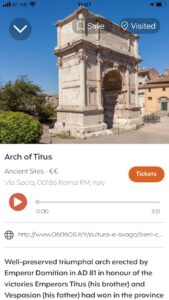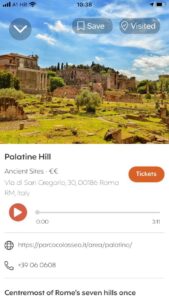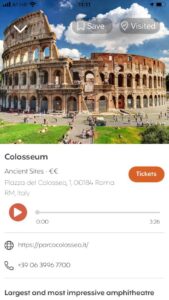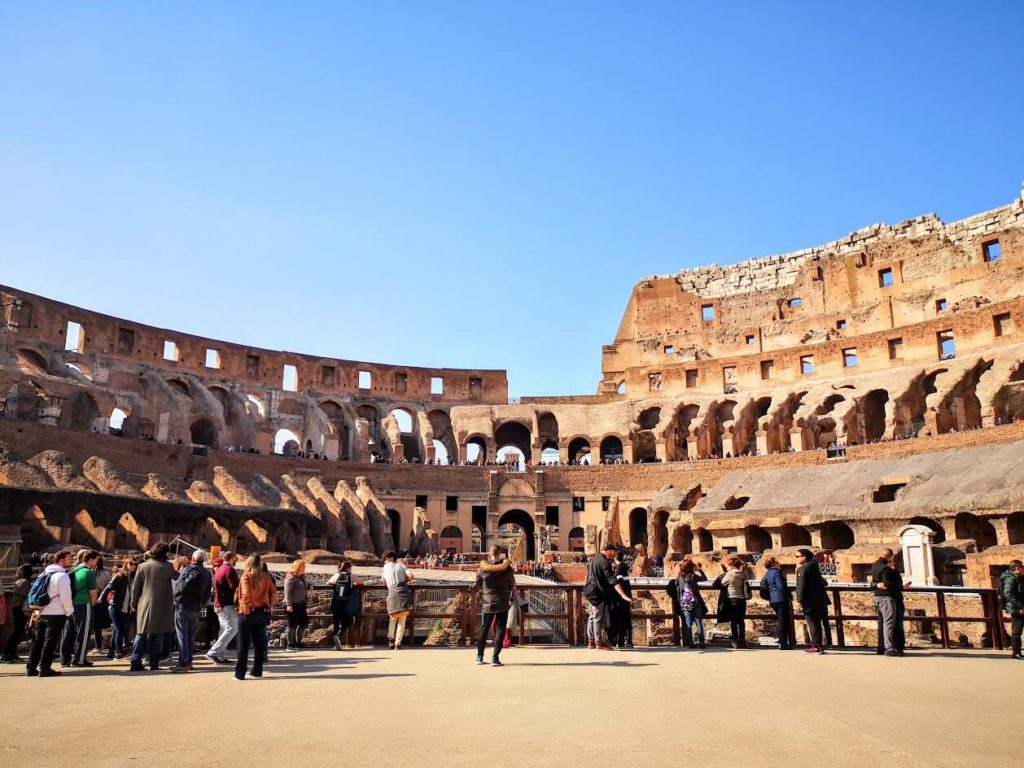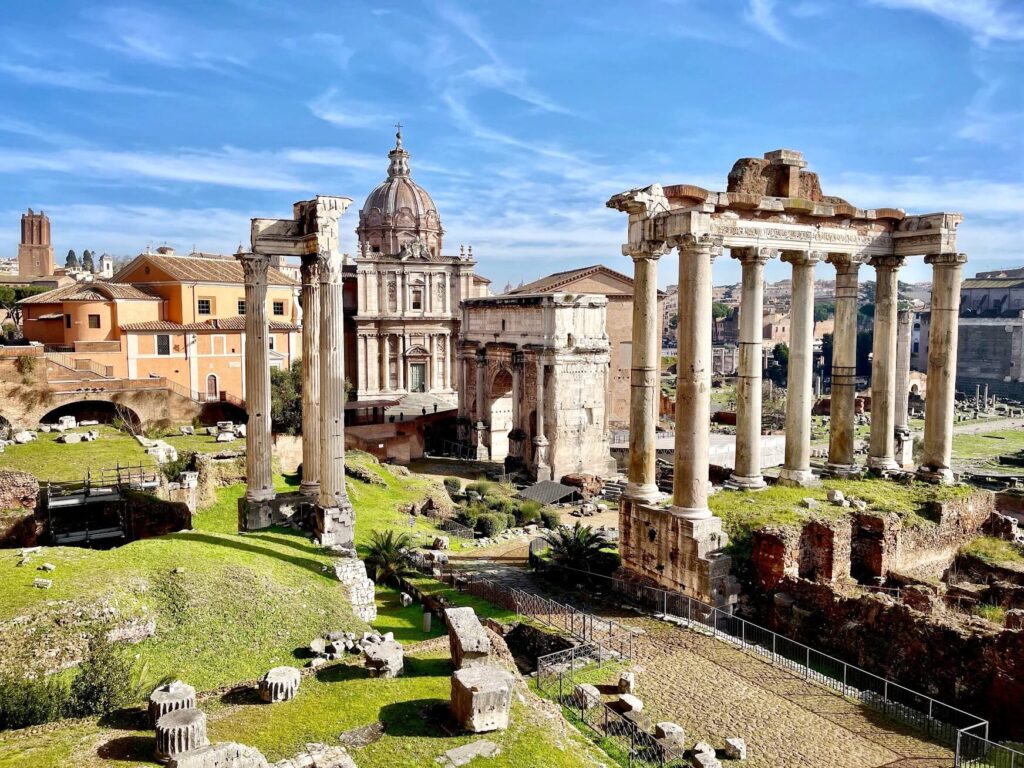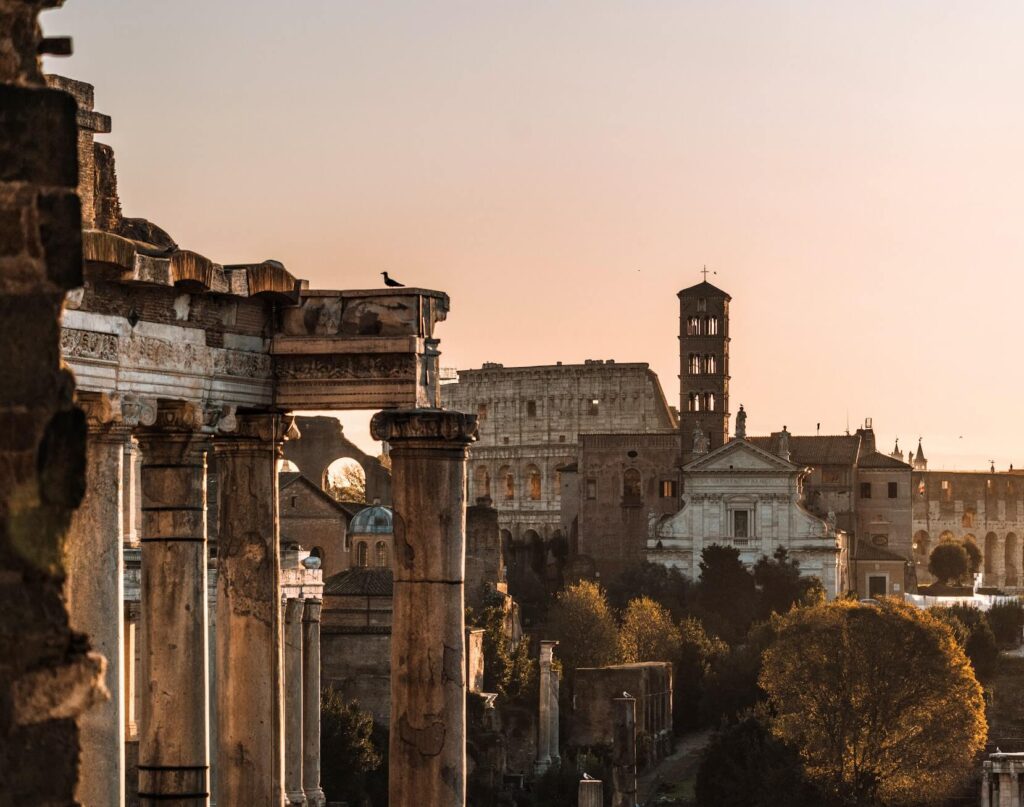Are you planning to visit Rome soon? Organising a trip to a new city is always exciting. However, if you’re travelling somewhere for the first time, it could be a bit challenging to plan all the details of your trip. Which sites to visit? Or where to find information about all that fantastic architecture you’ll see in the Italian capital? This is where travel apps could come in handy. And I have recently discovered a perfect one. So, keep reading to learn more about exploring Rome with the Urbs App.
Exploring Rome with the Urbs App
This blog post is sponsored by Urbs Travel. It’s a great city app for anyone interested in learning more about the art, history and culture of the cities they are visiting.
Before my first trip to Rome, I was a bit overwhelmed by all the museums, beautiful architecture, public art and the city neighbourhoods to visit. I didn’t want to over-plan my trip. But also wanted to see as much as possible during my visit to Rome.
If you are anything like me, you want to travel deep, learn a lot about the destination, and get a glimpse into the life of locals. Here is a tool that will help you in doing that – exploring Rome with the Urbs App.
⤷ Read more: My travel diary – Four days in Rome
Urbs App
Recently, I discovered the Urbs App, which offers a lovely combination of exploring the city on a guided tour and reading a guidebook. They asked local culture experts and writers to create content about some of the most exciting sites and hidden gems in the cities across Europe.
You’ll find a map within the app with all the interesting locations to visit in a specific city. By clicking on that site, you’ll get more information about it. It’s pretty unique because you can create your own route through the city and pick up the locations you’re the most interested in. That way, you’ll get your own customised guide to the city you’re going to visit. It could be visiting its Churches & Basilicas or exploring its Art & Architecture.
⤷ TIP: The app is handy because you can also see for which sites you need entrance tickets. And you can buy them through the app.
Urbs App Review
Setting up the Urbs app on my phone was very easy. In the beginning, I could choose my interests, so the app could offer the best sites for me. In my case, those were, of course, museums, cultural sites and history.
Some of the content is paid, but some are free to use. That way, you can check it out and see if you like it before purchasing the paid content. The Rome section is free of charge, so you can check it out and plan your trip by using it.
⤷ Read more: What to see in Vatican City?
Exploring Rome with the Urbs App
And I did just that! After login into the Urbs App, I chose Rome as the city I wanted to explore. I really liked that the content is available both in written and audio form. It could be helpful to read from your screen if you’re on public transport and don’t have your headphones. But, then when you’re on site, you could listen to the audio guide and enjoy the view of some lovely Roman architecture.
The content is very well written. Although I thought I knew the Roman history very well, it was so interesting to read about it in the app.
In an imaginary competition of European cities over cultural heritage, Rome would be without match. Its combination of haunting ruins, soaring domes silhouetted against distant hills, and ornate palaces serves as a constant reminder of its place at the forefront of European history.
After the historical introduction that presents Rome’s history from its beginnings to the present day, you can explore some of its sites. They are marked on a map by category, so you can easily find the ones you are interested in.
You can choose from some already created routes, like the ‘Ancient Rome’, ‘Art & Architecture’ or ‘Best of Rome’. Or you can explore the sites that seem interesting and create your own route.
I decided to explore some of the already created routes and have chosen ‘Ancient Rome’. I could see all the sites on a map, together with the recommended route to get from one to another. It also calculates the time you’ll need to visit them (both distance between the sites and time you’ll spend on them) which makes planning your day while travelling so much easier.
1/ Palatine Hill
The first stop on my route was one of Rome’s seven hills – Palatine Hill. Once again, I could choose between the written and audio content. However, I also had an option to buy the tickets through the app. This is such a helpful feature. Often when travelling, you’re not sure where to buy the entrance tickets. Or, do you need to buy them in advance? However, with the Urbs App, you get a link on each site for which you need the entrance tickets, with a link to the online tickets. It’s so useful!
The Urbs App content is very engaging, and I was pulled up in the story immediately.
The history of Rome begins with a myth. A peculiar story that takes place here at the Palatine Hill. Once upon a time, not far from here, a princess gave birth to twin sons: Romulus and Remus. The king, her wicked uncle, had stolen the throne from the princess’s father. In fear that the twins would one day lay claim to the kingdom, he ordered his servants to throw them into the River Tiber.
⤷ TIP: Besides that, you’ll find a link and contact details for each site on the route. This helpful information provided in the app saves so much time while planning your trip.
2/ Roman Forum
Roman Forum was the next stop on this lovely walk around Rome with the Urbs App. It is one of the most famous archaeological sites in the world and a place that shouldn’t be missed in Rome. Although I visited it before, I learned from the app that although today we associate it with some grand celebrations happening there, it was also a place of many common activities, like flower selling, butcher shops or prostitution.
3/ Arch of Titus
I continued exploring Ancient Rome by visiting one of the best-preserved Roman arches, the Arch of Titus.
A military triumph was the greatest honour that any Roman general could hope to achieve, an extravagant parade put on for all the city to behold.
And this arch witness about one of those triumphs, the one of Emperors Titus and Vespasian, erected by their brother and son Emperor Domitian in 81 AD. Its description in the app provides you with every single detail and decoration on it.
4/ Arch of Constantine
Located just a few steps away is the next stop on this enjoyable cultural walk through Rome, the Arch of Constantine. It’s the largest and probably most interesting arch in Rome. It definitely has one of the most complicated iconographies, which caused many Art History students to fail the Late Antiquity Art exams (including myself).
However, it’s well explained in the app, so you can listen to the audio guide while enjoying the view of some of the most beautiful Roman statues and decorations you’ll find in Rome.
5/ Colosseum
During my first visit to Colosseum, I was impressed by its size and architecture. However, I left with a bit of a disappointment because I missed some of the stories about it, like this one:
Games were advertised via billboards and were held thanks to the wealth of private individuals rather than the state. For enthusiasts, a program was distributed on the day of the games displaying the finer details of proceedings, including match records of gladiator pairs and a full schedule of fights, should anyone wish to study the form before placing their bets.
6/ Trajan’s Forum
One of the most interesting ancient sites in Rome is, without any doubt, Trajan’s Forum. It’s also one of the best examples of storytelling in art history. In 23 frames, stories from Trajan’s campaign in Dacia (today’s Romania) have been told.
Built in the 2nd century AD, it witnessed the glory of the Roman Kingdom.
7/ Theatre of Marcellus
The Romans haven’t invented the theatre, but they definitely perfected it. The next stop on my walk around ancient Rome was the Theatre of Marcellus.
Performances possessed an impressive variety and range, from juggling and acrobats to pantomime and elegantly written tragedies. Much like the theatres themselves, these Roman tragedies were modelled closely on their Greek equivalents, and in the early years they would consist of translations rather than new material. Audiences knew the plays so well that they could cue the actors who had forgotten their lines!
8/ Area Sacra
The last stop on my tour of Rome with this great city app was Area Sacra. It’s the area where you can find the ruins of four Republican temples. One of them is allegedly where Julius Caesar was murdered in 44 BC. I learned quite a lot about that famous man with the audio tour. And have finished my Rome tour in a great way.
⤷ Read more: The travelling artists in Renaissance Europe
Using the apps and audio tours while travelling could be a great way to explore the city in a new way and learn even more about it. After trying the Urbs App in Rome, I can sincerely say I will be their loyal customer from now on. With such fantastic, well-written content filled with fascinating facts, it’s a great new way to explore the cities.
You can check out the Urbs Travel website on a link here, read some of their articles and see which cities they cover with their app.
Have you tried using travel apps when exploring the cities before? What was your experience?
Cover photo by Carlos Ibáñez on Unsplash



